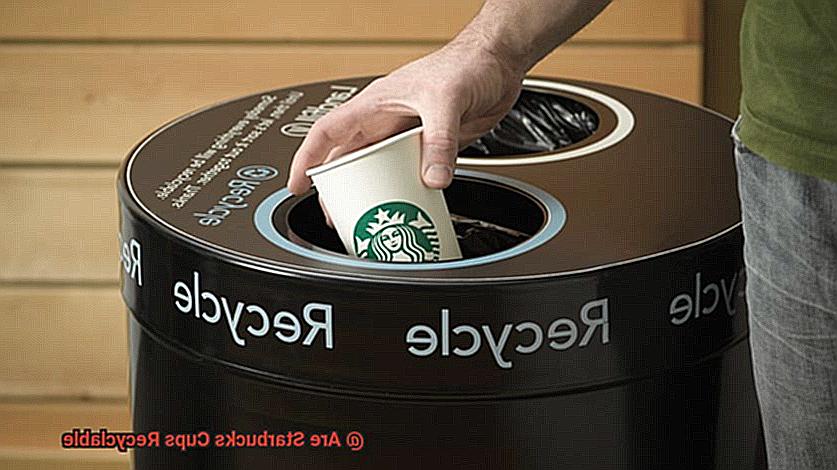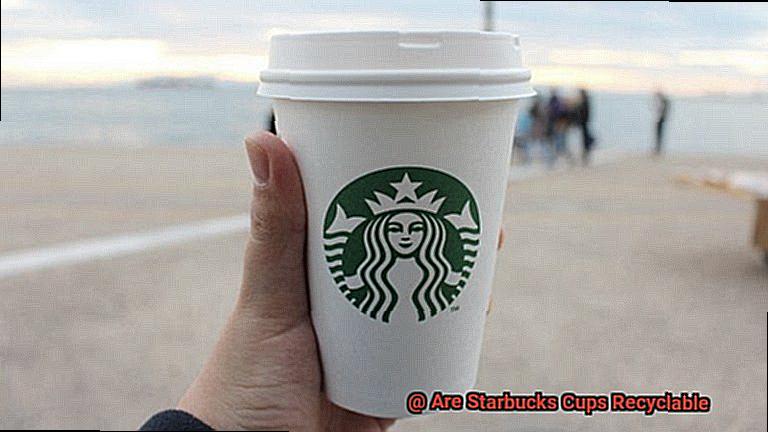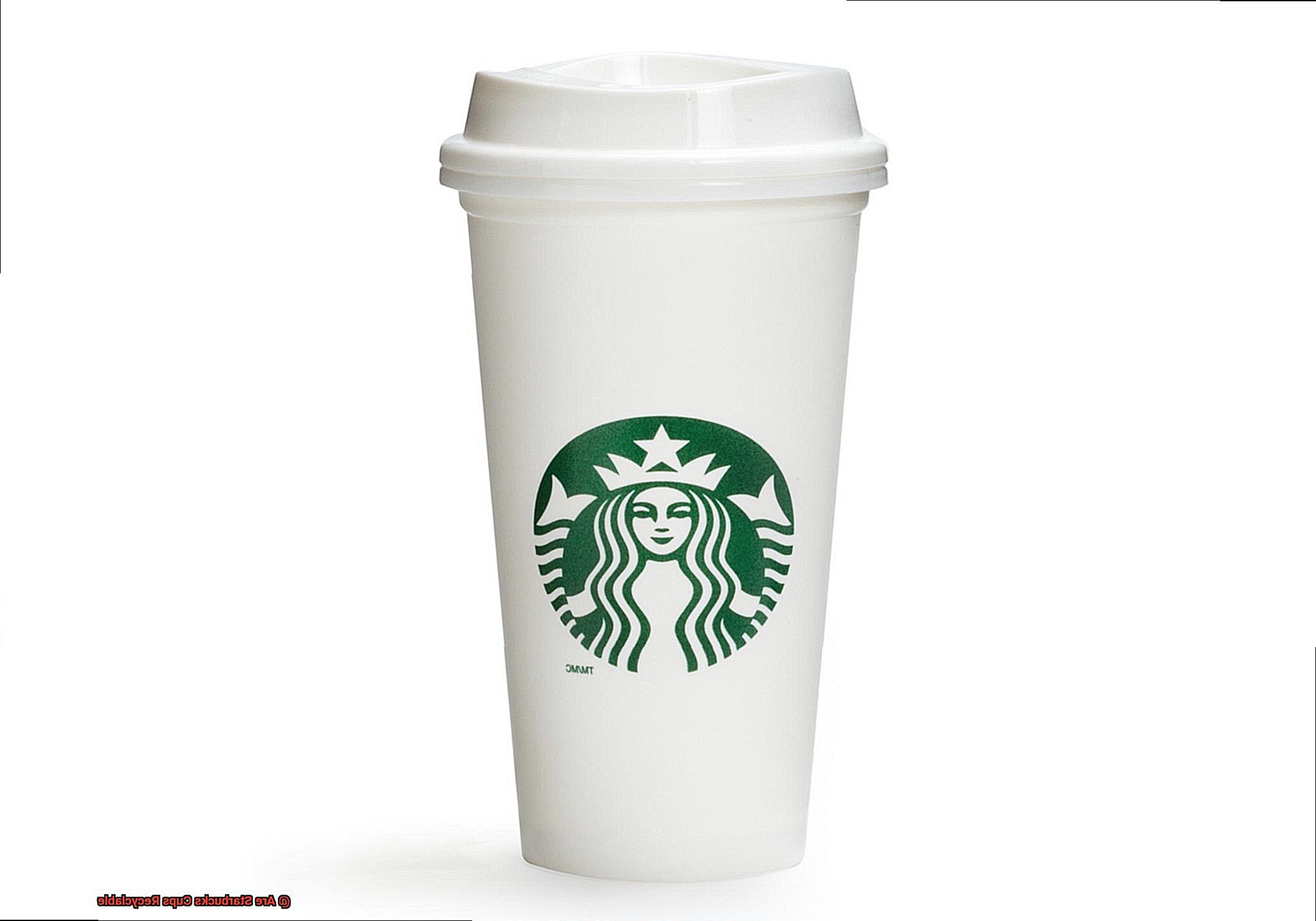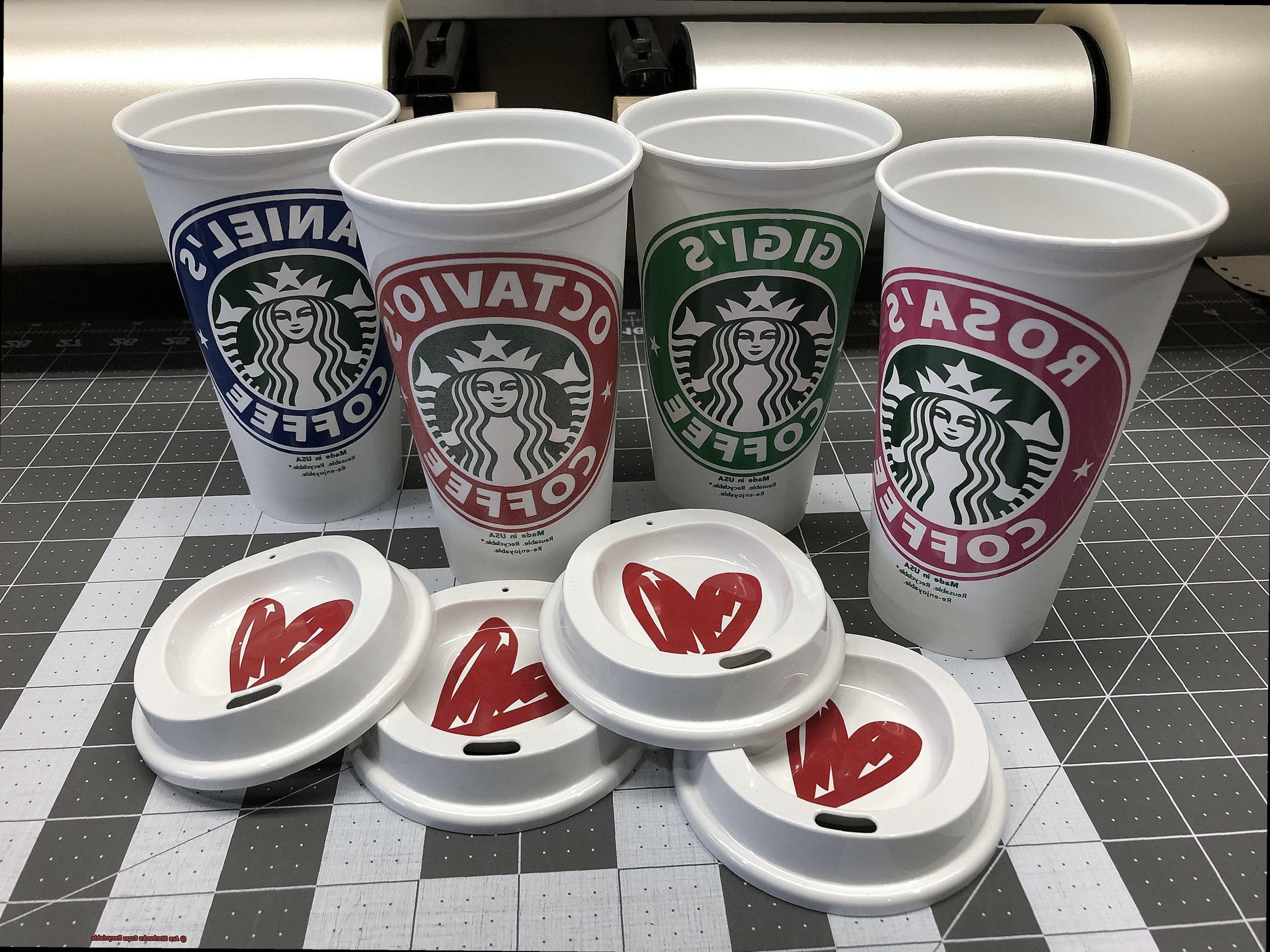Do you start your day with a steaming cup of coffee from Starbucks? If so, have you ever wondered about the environmental impact of those famous Starbucks cups? Are they recyclable or do they end up in landfills?
The answer isn’t straightforward. Technically, Starbucks cups are recyclable, but unfortunately, many of them still end up in the trash. This isn’t entirely Starbucks’ fault; it’s often due to the complexities of recycling systems and consumer habits.

But we can’t just sit back and accept this situation. In this blog post, we’ll delve into the details of Starbucks cups and recycling. We’ll explore why recycling these cups can be challenging, what measures Starbucks and other companies are taking to improve their sustainability practices, and how you as a coffee drinker can reduce your environmental footprint.
So grab your favorite mug and get ready for an in-depth exploration of Starbucks cups and recycling. By the time you finish reading this post, you’ll have all the information you need to make informed choices about your coffee consumption and its impact on our planet.
What are Starbucks Cups Made of?
Contents
Well, as an expert on the subject, I can tell you all about it.
Starbucks cups are primarily made of paper, but not just any paper. They’re crafted from a special type of paper called “food-grade paperboard.” This paper is designed to withstand high temperatures and prevent leaks, ensuring that your hot coffee stays hot and your cold drink stays refreshingly cool.
The paperboard is coated with a thin layer of plastic or wax to make the cups more durable and resistant to liquids. The plastic coating is made of polyethylene, a plastic that’s commonly used in packaging materials. Known for its durability and resistance to moisture, polyethylene is ideal for use in food and beverage containers.
However, this plastic lining makes it challenging for Starbucks cups to be recycled. Although they’re technically recyclable, not all recycling facilities can process them due to the plastic lining. This means that even if you toss your used Starbucks cup into the recycling bin, it may still end up in a landfill.

To address this issue, Starbucks has pledged to make their cups fully recyclable by 202Until then, they’ve introduced a program called “Bring Your Own Tumbler” to encourage customers to use reusable cups instead of disposable ones.
But Starbucks isn’t just relying on customers to help the environment. They’re also doing their part by using recycled materials in their cups. For instance, their hot beverage cups are made with 10% post-consumer recycled fiber, while their cold beverage cups are made with up to 50% post-consumer recycled fiber.
Starbucks cups are mainly composed of paper with a thin coating of plastic or wax. While they’re not fully recyclable at the moment, Starbucks is taking steps to become more environmentally friendly by using recycled materials and seeking out new technologies to create more sustainable packaging solutions.
Are Starbucks Cups Recyclable?
Well, the answer is a bit complicated. While the cups are made of paperboard, the thin plastic lining inside them makes the recycling process a challenge.
The plastic lining is essential to keep your coffee from leaking and your hands dry. However, this same lining makes it difficult for many recycling facilities to process these cups. Even those that can require a specialized and often too-expensive process.
Starbucks is actively addressing this issue and striving to make their cups fully recyclable by 202They have partnered with organizations like Closed Loop Partners to develop a compostable and recyclable cup that can be processed in existing recycling facilities. They have also invested in improving recycling infrastructure and educating customers about proper disposal methods.
Despite these efforts, there is still work to be done before Starbucks cups can be considered fully recyclable. It’s important for consumers to dispose of their cups in designated recycling bins and for companies to continue investing in sustainable packaging solutions.
In the meantime, we can all do our part by bringing our own tumblers or cups when we visit coffee shops. Not only does this reduce waste, but many coffee shops offer discounts for customers who bring their own reusable cups.
Challenges to Recycling Starbucks Cups
These cups are a mix of paper and plastic, which makes them difficult to recycle. The plastic lining is necessary to prevent leaks and soggy cups, but it creates an obstacle to recycling.
The lack of infrastructure is the first challenge. Most recycling facilities are not equipped to separate the plastic lining from the paper, which means that most cups end up in landfills instead of being recycled. This has been a major setback in creating a sustainable solution for recycling these cups.
Contamination is another issue that poses challenges to recycling Starbucks cups. These cups often become contaminated with food waste or other materials, making them difficult or impossible to recycle. Even a small amount of contamination can render an entire batch of paper and plastic unrecyclable.
The third challenge is consumer behavior. Despite Starbucks’ efforts to provide recycling bins in their stores, many customers still dispose of their cups improperly. This improper disposal means that even if there were more infrastructure in place to recycle Starbucks cups, many of them would still end up in landfills due to improper disposal.
To overcome these challenges, we need to work together to create innovative solutions. This might include developing new recycling technologies that can separate the plastic lining from the paper or educating consumers about proper disposal methods. Collaboration and commitment from all parties involved are essential to creating a sustainable solution for recycling Starbucks cups.
Starbucks’ Pledge to Make Their Cups Fully Recyclable by 2022
Starbucks, the global coffee giant, is famous for serving millions of customers worldwide. However, the company has also faced criticism for its environmental impact, particularly regarding its disposable cups. In response to this, Starbucks made a bold pledge in 2018 to make its cups fully recyclable by 2022.
To achieve this ambitious goal, Starbucks has been working on a new type of cup made from plant-based materials that will have a special lining designed to be easily removed during the recycling process. Although this initiative is a big step towards reducing waste and improving the company’s environmental impact, it is essential to note that not all of Starbucks’ cups are currently recyclable.
Starbucks’ current cups are made from paper with a plastic lining, making them difficult to recycle. Furthermore, not all recycling facilities are equipped to handle these types of cups, leading to an alarming amount of waste in landfills and oceans. To address this issue, Starbucks is investing in new recycling infrastructure and collaborating with local governments to improve recycling systems worldwide.
Already, Starbucks has started testing its new cups in select locations across the United States and Canada, with plans to roll out the cups globally by 202However, while Starbucks’ pledge to make its cups fully recyclable is a significant step forward, it is not enough on its own.
Consumers also need to play their part by bringing reusable cups or opting for drinks that do not require a disposable cup. By doing so, we can significantly reduce waste and protect our planet.

In conclusion, Starbucks’ pledge to make its cups fully recyclable by 2022 demonstrates its commitment to reducing waste and improving its environmental impact. Nevertheless, there is still work to be done, and we must all join hands to achieve this goal.
The “Bring Your Own Tumbler” Program
Beyond enjoying a delicious cup of coffee or tea, you can also join forces with Starbucks in their mission to promote sustainability and reduce waste. One such initiative is the “Bring Your Own Tumbler” program. In this article, we will delve into the perks of this program for both customers and the environment.
The program is simple – bring your own reusable tumbler or cup to Starbucks and receive a discount on your beverage. By doing so, you are taking one step closer to reducing waste from disposable cups, while also being incentivized to use your reusable cup in the future. Together, we can all work towards reducing landfill waste.
Starbucks offers an array of tumbler and cup options, including sustainable materials like bamboo and recycled plastic. Not only are these options eco-friendly, but they are also trendy and stylish. Moreover, partnering with companies like KeepCup means that Starbucks can offer their customers exclusive branded reusable cups that add an extra touch of excitement to bringing your own cup.
Now, let’s talk about the benefits of bringing your own tumbler. The most obvious benefit is saving money. Let’s say you visit Starbucks every day for a year and purchase a $4 drink each time. If you bring your own tumbler, you could save up to $1460 annually. It’s a significant amount that can be put towards other things.
But beyond saving money, bringing your own tumbler has a positive impact on our planet. Every small change counts when it comes to reducing waste and promoting sustainability. By choosing to use a reusable cup instead of a disposable one, you are helping reduce the amount of waste that ends up in landfills. It’s a small action that can make a big difference.
Starbucks’ “Bring Your Own Tumbler” program is an effective way to promote sustainability and reduce waste. With incentives and a variety of reusable cup options, Starbucks is encouraging customers to make small changes that can have a big impact on the environment.
XFWAptExGc8″ >
Conclusion
To sum up, recycling Starbucks cups is not a simple matter. The plastic lining in the paper cups makes them challenging to recycle at many facilities. Nevertheless, Starbucks is taking action by investing in new recycling infrastructure and developing a compostable and recyclable cup that can be processed in existing recycling facilities.
Moreover, Starbucks has launched the “Bring Your Own Tumbler” program to encourage customers to use reusable cups instead of disposable ones. This move helps customers save money and reduce waste from disposable cups.
Starbucks’ efforts to become more environmentally friendly are admirable, but there’s still work to be done. Customers must also do their part by disposing of their cups correctly or using reusable cups. Only through collaboration and commitment from all parties involved can we create a sustainable solution for recycling Starbucks cups.
In conclusion, as coffee lovers, we have the power to make a significant impact on our planet’s health by taking small actions such as bringing our own tumblers or using reusable cups.





